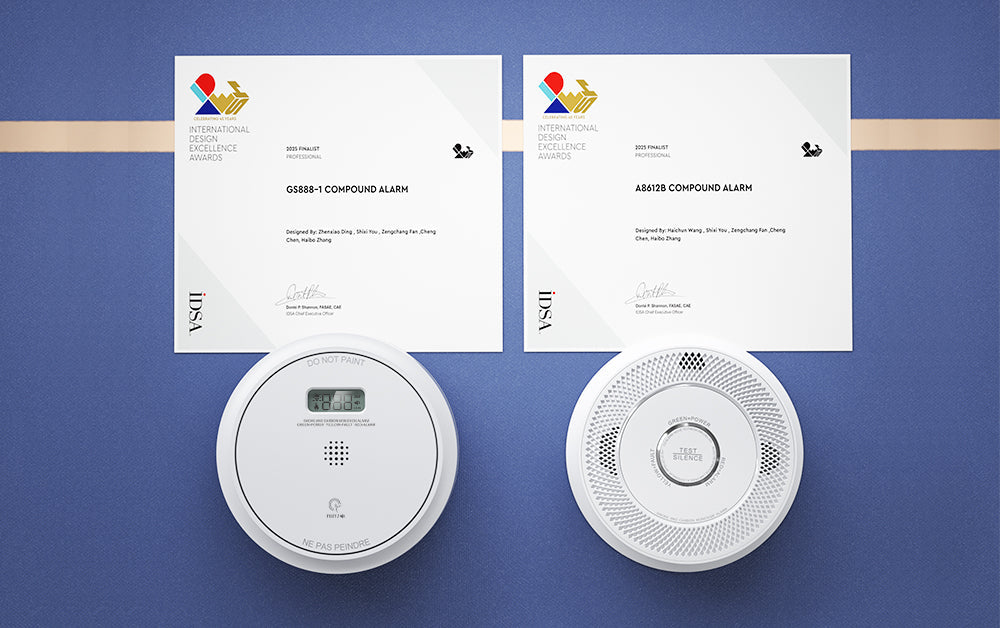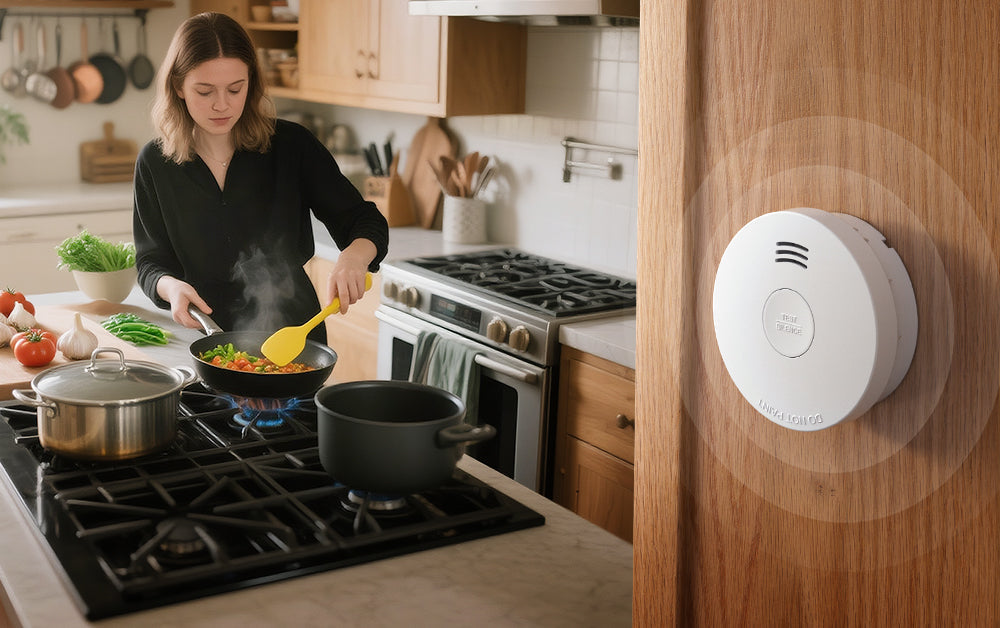The Growing Threat of Wildfire Smoke
In recent years, wildfire seasons have become longer and more unpredictable. According to the U.S. National Interagency Fire Center (NIFC, 2024), more than 7.5 million acres burned across the United States last year—almost twice the average of the previous decade.
But flames are only part of the danger. Fine smoke particles known as PM₂.₅ can travel hundreds of miles and enter homes even when windows are closed. These particles irritate the lungs and bloodstream, worsening asthma and cardiovascular conditions.
A Nature Sustainability (2025) study found that even a modest rise in wildfire-related PM₂.₅ concentrations correlates with a measurable increase in emergency room visits for respiratory illness. That means families can be breathing unhealthy air long before they see or smell smoke.

Why UL 217 Matters
When smoke enters a home, seconds count. A reliable alarm must detect true danger—not just steam from the shower or a puff from cooking.
The UL 217 standard, created by Underwriters Laboratories (UL), sets the performance benchmark for residential smoke alarms. It specifies how alarms must respond to both flaming and smoldering fires, and ensures accuracy in varying environmental conditions.
UL 217 testing evaluates:
1. Sensitivity — The alarm must detect smoke particles within defined time limits for different fire types.
2. Environmental stability — It must function reliably in extreme temperatures, humidity, or dust.
3. False alarm resistance — The alarm should remain silent during normal household activities to prevent unnecessary disablement.
Without UL 217 certification, alarms may either fail to alert quickly during a real fire or trigger too often without cause, leading users to silence them permanently. Both outcomes reduce safety and trust.

Siterwell’s Commitment to Safer Homes
Siterwell smoke and combo alarms meet UL 217 certification requirements, ensuring dependable performance in real-world fire conditions. Using advanced photoelectric sensors, these alarms respond effectively to slow, smoldering smoke—like that produced when wildfire particles enter indoor spaces through windows, vents, or HVAC systems.
Key design features include:
1. Interconnect capability – If one unit senses smoke, all connected alarms sound together, giving every family member an early warning.
2. 10-year sealed lithium battery – Provides uninterrupted protection, even during power outages that often accompany wildfire events.
3. False alarm minimization – Enhanced sensing algorithms reduce nuisance alerts, so you’re warned only when it truly matters.
By combining certified engineering with thoughtful design, Siterwell helps homeowners maintain calm, credible safety coverage year-round.
Upgrade to Certified Protection You Can Trust
You can’t stop wildfire smoke from drifting across your neighborhood—but you can control how your home responds. Choose UL 217– complied smoke alarms like those from Siterwell to ensure your system meets the highest safety benchmarks recognized across the U.S. and Canada.
To learn more about smoke alarms that meet the UL 217 standard, please visit our store.



